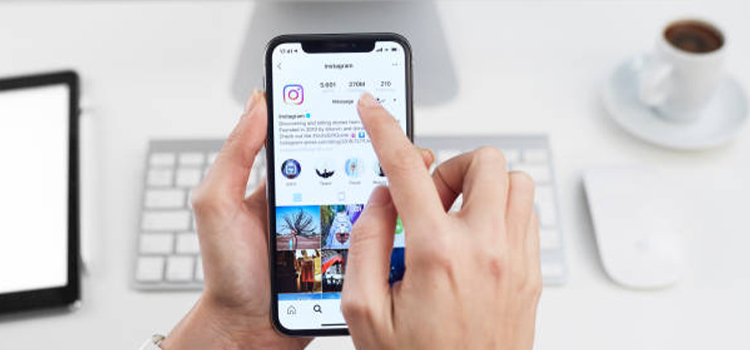Hybrid Events Best Practices For Event Management
A hybrid event is a mix of an online and in-person experience. When planning a hybrid event, it’s essential to remember the different ways people will interact with your content.
You’ll need to ensure that the online and offline experiences are cohesive and complementary and that participants have all the information they need to make the most of both parts of the event. Here are some best practices to remember when planning your hybrid event.

Keep the Online and Offline Experiences Cohesive
The goal of a hybrid event is to provide a seamless experience for participants, whether they’re attending in person or online. While this offers an excellent opportunity to reach a wider audience, it also presents a challenge: How do you ensure that the two sides of the event are cohesive?
The answer lies in careful planning. Before the event, you’ll need to determine the overall branding and messaging. This should be consistent across both the online and offline platforms.
You’ll also want to use similar formats for presentations and other content. For example, if you’re showing slides during a presentation, make sure that those slides are available online.
During the event, there should be a clear way for participants to switch between the online and offline experiences as needed. For example, if someone is attending online but wants to ask a question during a Q&A session, there should be a way for them to do that.
Likewise, if someone is attending in person but needs to step away for a moment, they should be able to switch to the online experience easily so they don’t miss anything.
Make Sure Participants Have All the Information They Need
One of the most important things to remember when hosting an event is that your participants should have all the information they need to engage fully. This means:
Create a Schedule of Events and Send Reminders
One of the most important things you can do to ensure your hybrid participants are engaged is to create a schedule of events and send reminders leading up to the event. This will help them plan their time and ensure they don’t miss any important sessions.
You can use a tool like Google Calendar or Outlook to create your schedule and set up reminders or send emails with links to the schedule and individual session reminders. Using a reliable hybrid event platform like Eventtia, you can also take advantage of their email marketing features.
Make Relevant Materials Easily Accessible
Another critical element of successful hybrid events is ensuring all relevant materials are easily accessible. This includes things like the schedule of events, presentations, handouts, and any other resources that participants might need. If participants have to go searching for these things, they’re likely to become frustrated and disengaged.
The best way to ensure materials are easily accessible is to create a central repository where everything can be found in one place, such as a website or shared drive. You can then provide participants with the link to this repository before the event so they can bookmark it or save it somewhere easily accessible.
Have someone Available to Answer Questions
Finally, it’s essential to have someone available during the event to answer any questions that come up, both from in-person and virtual attendees. This could be someone from your team who is familiar with the material or knows how to use the hybrid event platform you’re using.
Having someone available to help participants with any technical issues that come up will help ensure everyone stays engaged throughout the event.
These steps can help create a more enjoyable and successful experience for everyone involved. Having all the information also helps ensure that your participants get the most out of your event. It allows them to plan their time accordingly and ensures they are prepared for everything happening.
In addition, having all the information helps build trust between you and your participants. When people feel they have all the information they need, they are more likely to feel comfortable and confident in their decision to attend your event. This is especially important if you host a hybrid event with in-person and online attendees.
Three Steps to Ensure Your Participants Have All The Information They Need
So how do you ensure your participants have all the necessary information? Follow these three steps:
- Schedule regular check-ins with your team: Meet with your team regularly to discuss what information needs to be shared and when. This will help ensure that everyone is on the same page and no important details are overlooked.
- Communicate early and often with your participants: Send frequent reminders about upcoming deadlines, events, or changes in plans. The more communication you have with your participants, the less likely it is that something will slip through the cracks.
- Utilize different channels: Don’t rely on just one method of communication. Send out emails, post updates on social media, or even give people a call if necessary. Using multiple channels, you can help ensure that everyone gets the information they need regardless of how they prefer to receive it.
Provide Opportunities for Both Online and Offline Interaction
A hybrid event is a great way to provide online and offline interaction opportunities. Make sure you take advantage of this by providing plenty of opportunities for participants to interact with each other, whether in the same room or not. This can include:
Small Group Discussions
Small group discussions are an excellent way for participants to interact with each other and learn from each other.
Schedule time for small group discussions if you’re planning a hybrid event. This could be done as part of a breakout session or as a standalone activity. Either way, it’s an excellent way for participants to interact with each other and learn new things.
Breakout Sessions
Breakout sessions are another excellent opportunity for participants to interact with each other. These sessions are usually smaller and more intimate than the main presentations, which allows participants to get to know each other.
If you’re planning a hybrid event, make sure to schedule time for breakout sessions so that participants can have the opportunity to interact with each other.
Networking Activities
Networking activities are an excellent way for participants to interact with each other and build relationships.
If you’re planning a hybrid event, schedule time for networking activities. This could include something as simple as having an icebreaker at the beginning or scheduled networking breaks throughout the event. Whatever you do, ensure plenty of opportunities for participants to interact with each other.
Conclusion
Hybrid events are a great way to reach a larger audience while providing an interactive experience. Keep these best practices in mind when planning your hybrid event to ensure a seamless experience for all participants.
Subscribe to our newsletter
& plug into
the world of technology





